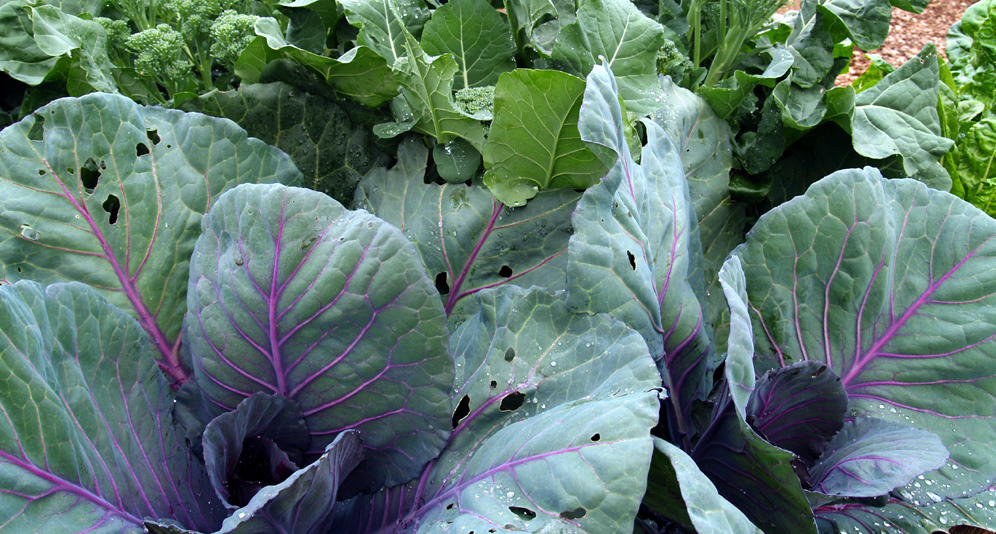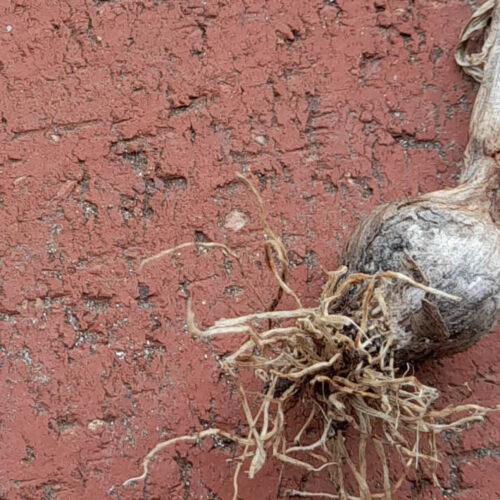An elegant pest control solution
2011-04-26T23:09:44+10:00
It can be tempting to think that organic gardening is simply about replacing toxic sprays with organic versions. Justin Russell looks at "exclusion" an elegant pest control solution that is about working smarter, not harder.
A couple of months ago, I had a first-time vegetable gardener contact me to ask whether I might be able to help with a major problem in her garden. Her brassica crops were being absolutely wiped out by what she called “grubs”. They were, of course, the dreaded and ubiquitous cabbage white butterfly caterpillars, and with an obvious sense of frustration she said “We’ve put all this effort into getting the garden set up, but now it’s being totally ruined”.
I was tempted to reply “welcome to the world of home vegie growing!”, but instead, I shared one of my favourite gardening mantras – “there’s always next season” – and did my best to offer some simple, practical advice to help control the problem. I usually try to give people a few different suggestions. Some involve substitutional techniques like spraying with an organic pesticide (in this case Bacillus thuringiensis), other suggestions are less conventional. Often I recommend doing nothing at all, but in this lady’s case, the best advice I could offer was “exclusion”.
As the name suggests, exclusion uses physical barriers to stop pests accessing a food crop. As a technique, it has been around for as long as people have been producing food, and probably started when shepherds and other animal herders used hedges and temporary fences to protect their flock from predators. Fencing is still used today, of course, but exclusion comes in a number of other forms as well.
An effective method that was used in Japan for decades, and is now becoming popular in Australia, the use of exclusion bags. These slip over a piece of ripening fruit or a cluster of fruit, and form a physical barrier between the pest, and the fruit. Exclusion bags can be as simple as a brown paper bag with a tie attached, or they can be more elaborate commercial products made from waxed paper, lightweight polypropylene or flyscreen mesh. I’ve found them all to work brilliantly on pests such as fruit fly, but they definitely won’t stop a hungry possum or cockatoo.
This is where netting can come in handy. Home gardeners have been using nets to keep birds off their fruit trees for years, but lots of gardeners seem to forget that so called “bird netting” can also be used very effectively in the vegie garden. This year, I had a problem with king parrots eating my tomatoes. Netting did the trick. Similarly, possums were munching some of my leafy green seedlings. Netting provided enough of an impediment to change their behaviour.
One of my favourite ways to use netting is to control caterpillars. With all those holes it sounds like a flawed plan, doesn’t it, and the lady who called me to ask about grubs must have thought I was bonkers when I made the suggestion. It doesn’t directly deal with the caterpillars, of course, but controls the cabbage white butterflies by stopping them from getting to the brassica leaves where they lay their eggs. If the netting has a fine weave, total control can be achieved, but it the cool seasons, regular bird netting is very effective. I simply throw it over a simple frame. The odd small butterfly gets through, but it is a lot cheaper and easier than spraying every two weeks with Bt.
As organic gardeners, we often fall for the con that all we need to do to go green is substitute an organic spray for a conventional one. I think this approach largely misses the point. While some spraying will always be required to produce viable food crops, our aim should be to work smarter, not harder. Exclusion is an elegant solution that employs the most important tool in the gardener’s arsenal – the brain.






